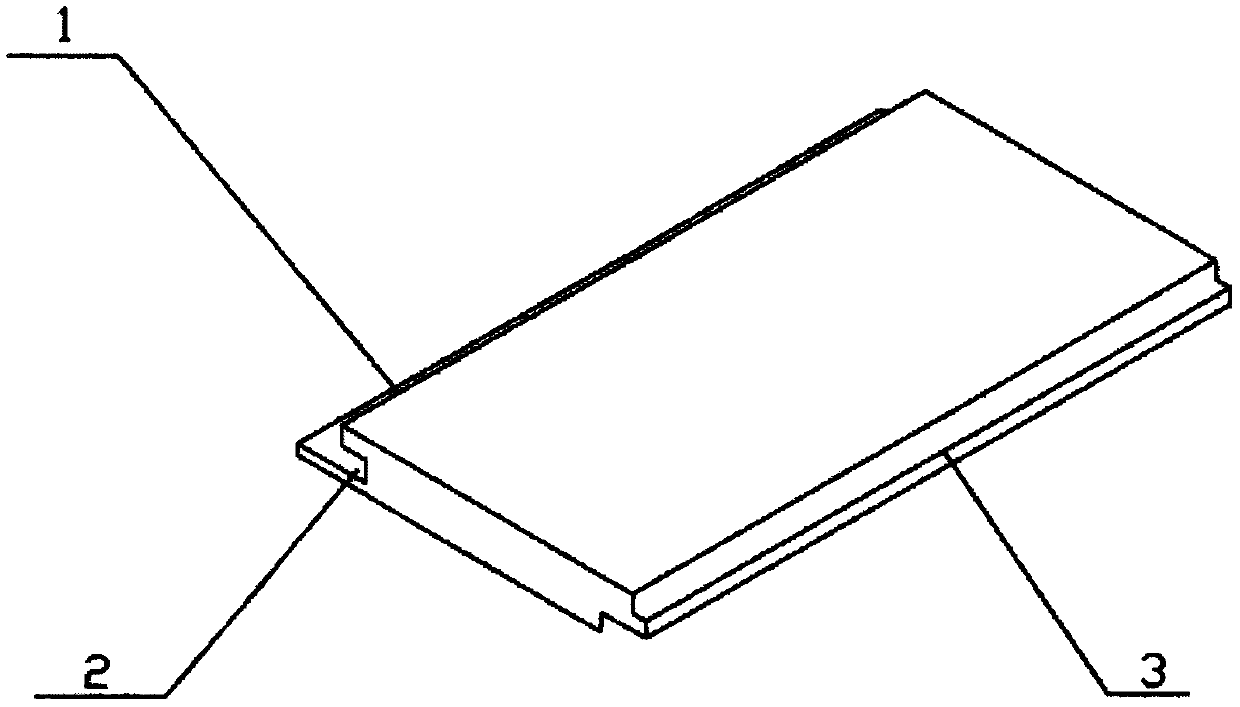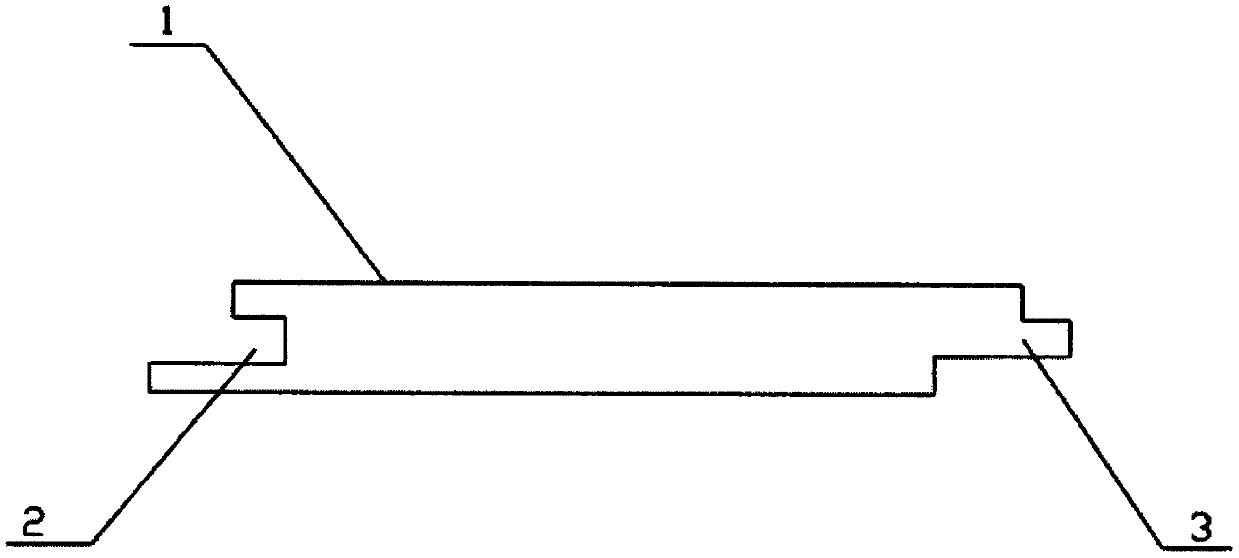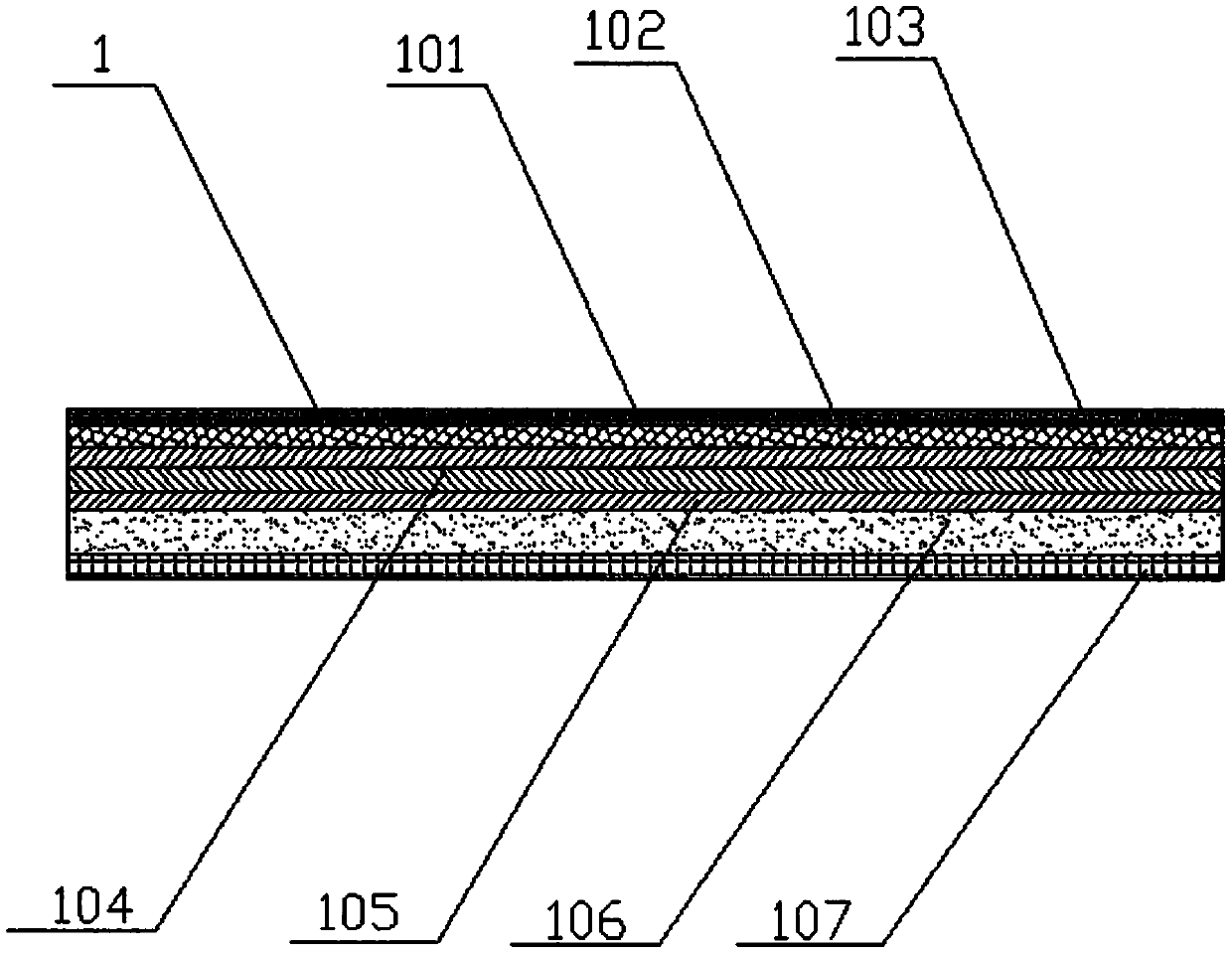Three-layer solid wood floor with negative ions and capable of removing formaldehyde and production process thereof
A production process, a technology of negative ions, applied in the field of wood flooring, to achieve the effect of improving lung function, improving myocardial nutrition, and reducing the use of wood
- Summary
- Abstract
- Description
- Claims
- Application Information
AI Technical Summary
Problems solved by technology
Method used
Image
Examples
Embodiment 1
[0037] The raw material formula is:
[0038] Including 33% wood chips, 18% corn stalks, 23% waste rubber, 3% negative ion powder, 1.5% flame retardant, 1.5% waterproofing agent and 12% adhesive.
[0039] Specific steps are as follows:
[0040] Step 1: Cut sawdust, corn stalks and waste rubber separately and grind them into granules, pass through an 80-mesh sieve, put them into a mixer and stir evenly to obtain a mixture;
[0041] Step 2: Add negative ion powder, flame retardant, waterproofing agent and adhesive to the mixture in step 1 in sequence and stir evenly, and shape it by hot pressing to obtain the base material layer;
[0042] Step 3: Put the wear-resistant layer, decorative layer, substrate layer, first solid wood layer, second solid wood layer, third solid wood layer and balance layer into a high-temperature press for pressing;
[0043] Step 4: cutting and grooving the pressed wooden floor to obtain a finished wooden floor.
[0044] experimental method:
[0045] S...
Embodiment 2
[0048] The raw material formula is:
[0049] Including 35% wood chips, 20% corn stalks, 25% waste rubber, 5% negative ion powder, 2% flame retardant, 3% waterproofing agent and 10% adhesive.
[0050] Specific steps are as follows:
[0051] Step 1: Cut sawdust, corn stalks and waste rubber separately and grind them into granules, pass through an 80-mesh sieve, put them into a mixer and stir evenly to obtain a mixture;
[0052] Step 2: Add negative ion powder, flame retardant, waterproofing agent and adhesive to the mixture in step 1 in sequence and stir evenly, and shape it by hot pressing to obtain the base material layer;
[0053] Step 3: Put the wear-resistant layer, decorative layer, substrate layer, first solid wood layer, second solid wood layer, third solid wood layer and balance layer into a high-temperature press for pressing;
[0054] Step 4: cutting and grooving the pressed wooden floor to obtain a finished wooden floor.
[0055] experimental method:
[0056] Ste...
Embodiment 3
[0059] The raw material formula is:
[0060] Including 33% of wood chips, 22% of corn stalks, 23% of waste rubber, 7% of negative ion powder, 2.5% of flame retardant, 4.5% of waterproofing agent and 8% of adhesive.
[0061] Specific steps are as follows:
[0062] Step 1: Cut sawdust, corn stalks and waste rubber separately and grind them into granules, pass through an 80-mesh sieve, put them into a mixer and stir evenly to obtain a mixture;
[0063] Step 2: Add negative ion powder, flame retardant, waterproofing agent and adhesive to the mixture in step 1 in sequence and stir evenly, and shape it by hot pressing to obtain the base material layer;
[0064] Step 3: Put the wear-resistant layer, decorative layer, substrate layer, first solid wood layer, second solid wood layer, third solid wood layer and balance layer into a high-temperature press for pressing;
[0065] Step 4: cutting and grooving the pressed wooden floor to obtain a finished wooden floor.
[0066] experiment...
PUM
| Property | Measurement | Unit |
|---|---|---|
| density | aaaaa | aaaaa |
Abstract
Description
Claims
Application Information
 Login to View More
Login to View More - R&D
- Intellectual Property
- Life Sciences
- Materials
- Tech Scout
- Unparalleled Data Quality
- Higher Quality Content
- 60% Fewer Hallucinations
Browse by: Latest US Patents, China's latest patents, Technical Efficacy Thesaurus, Application Domain, Technology Topic, Popular Technical Reports.
© 2025 PatSnap. All rights reserved.Legal|Privacy policy|Modern Slavery Act Transparency Statement|Sitemap|About US| Contact US: help@patsnap.com



